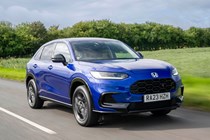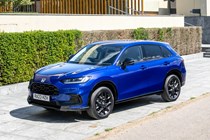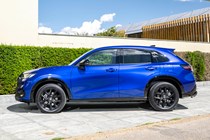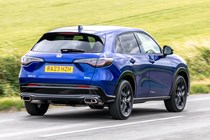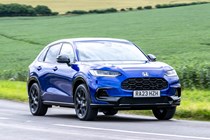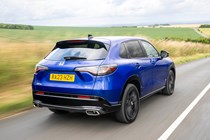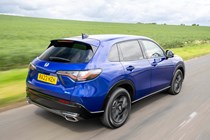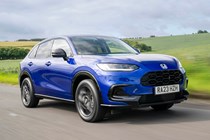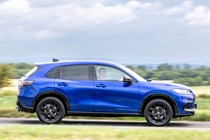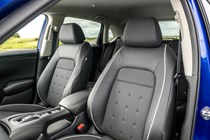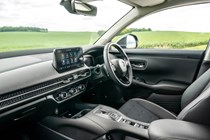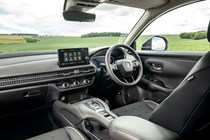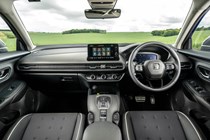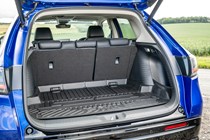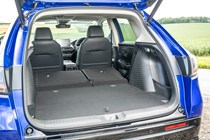
Honda ZR-V engines, drive and performance

- Just one hybrid powertrain available
- Offers good performance fuel economy
- Sharp handling (for a family SUV)
Hybrid engines
The Honda ZR-V is only available with one self-charging hybrid powertrain. It’s Honda’s innovative e:HEV system, which combines a 2.0-litre four-cylinder petrol engine with two electric motors and a small battery pack. It has a combined power output of 186hp and 315Nm of torque.
Most of the time, the ZR-V’s petrol engine isn’t used to power the wheels directly. It works as a generator when you’re pottering around town, producing enough electricity to supply the electric motor connected to the front wheels. That means it drives like an EV at low speeds, with the only giveaway being the faint rumble of the petrol engine on the other side of the bulkhead.
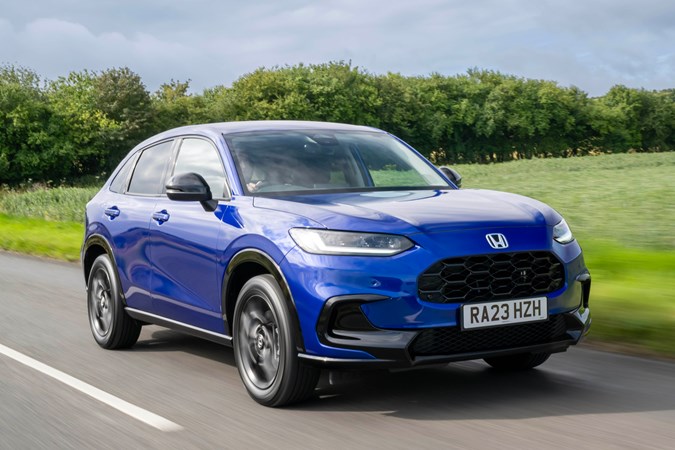
When you reach a faster B-road, the petrol engine becomes more vocal. Floor the throttle and it’ll burst into life, smoothly soaring through the rev-range and punting you down the road. It’s a reasonably fast car when considered in isolation but, having driven the same powertrain in the Civic, we were a little disappointed by the performance.
Honda says the ZR-V and Civic’s 0–62mph times are identical at 7.9 seconds, but we don’t believe the claims. From behind the wheel, the ZR-V feels noticeably slower. It’s 146kg heavier than the hatchback – and you can feel that extra weight when accelerating down motorway slip roads or overtaking from a cruise. The ZR-V simply isn’t as urgent.
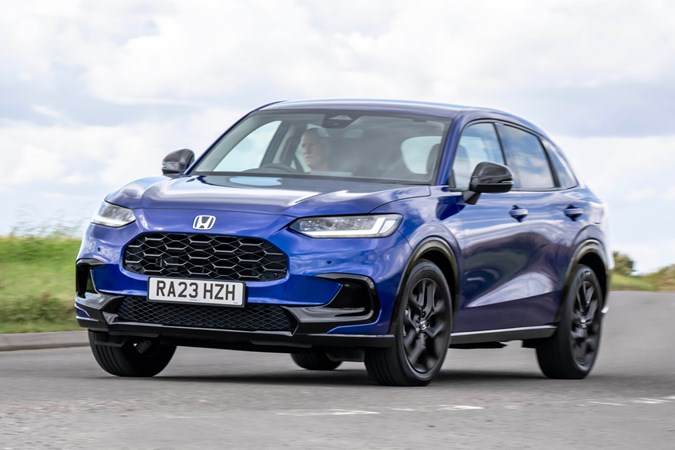
Honda’s hybrid system is very clever, though. Unlike conventional hybrid SUVs such as the Toyota RAV4 and Kia Sportage, Honda’s e:HEV powertrain doesn’t have a traditional gearbox. When you ask for maximum performance, the engine is directly coupled to the front wheels through a clutch to top-up the electric motor’s performance – and the changeover is completely seamless.
What’s more, to make the system feel more familiar to buyers trading up from older combustion-engined vehicles, Honda engineered simulated gearshifts into the car’s software. That means, when you’re driving on faster roads, the engine note rises and falls like a conventional automatic vehicle. It’s very convincing and far more pleasant to listen to than the thrashy CVT-backed engine in the Honda CR-V.
What’s it like to drive?
The ZR-V is easily one of the best-handling cars in its class. Naturally, it doesn’t drive as well as the Civic on which it’s based, but that’s to be expected because it’s carrying more weight on much taller suspension. Still, it runs rings around the Kia Sportage and Nissan Qashqai in terms of its cornering ability and driver engagement. The only other family SUV that comes close to it is the Mazda CX-5 – but that car isn’t available with a self-charging hybrid powertrain.
We were particularly impressed by the ZR-V’s suspension setup because it manages to be comfortable without being unpleasantly soft. It retains its ride height well down undulating back roads, but the dampers still have enough elasticity to absorb sharp impacts such as potholes and expansion joints. It doesn’t even roll that much (for an SUV) when you pitch it hard into a corner.
Honda’s wheel choice plays a big part in the ZR-V’s ride quality. You can only specify the car with 18-inch alloys – and we reckon that’s the goldilocks zone. Fitting smaller alloys would have made the ZR-V feel floaty, while larger alloys would have ruined the car’s ability to soak up imperfections. As it stands, there’s just enough meat on the tyres to cushion the initial impact of a pothole before passing it up to the suspension.
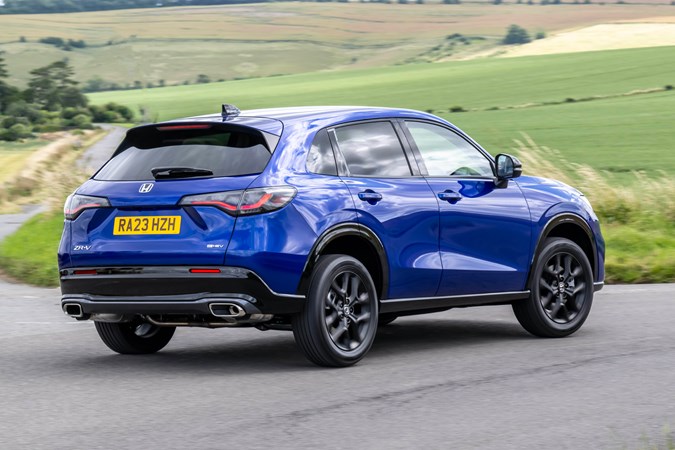
We like the ZR-V’s steering, too. It’s reasonably quick and very direct with little play around the centre. It’s slightly too light in the car’s default drive mode, but it firms up well once you switch to Sport mode. There isn’t a great deal of feedback, but that’s a complaint that can be levelled at every almost new SUV on sale today.
The brakes are also a little feathery but, again, that’s just a tell-tale sign that you’re driving modern hybrid SUV. The ZR-V relies on its electric motors more than, say, a Toyota Corolla hybrid – and it’s programmed to use its regenerative brakes as often as possible, which explains some of the softness. Once you push past the first inch of travel and engage the friction brakes, you’ll find some resistance in the pedal.


